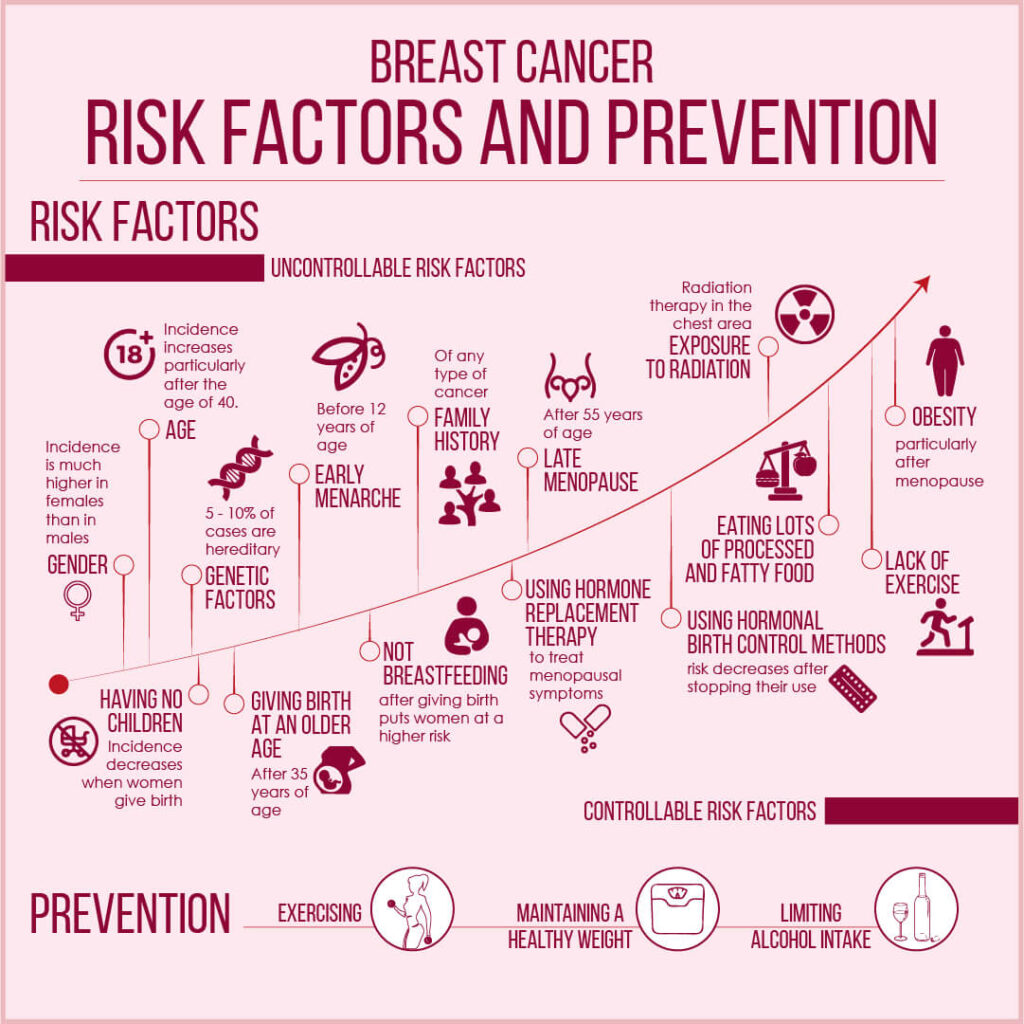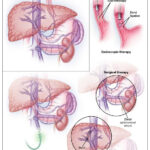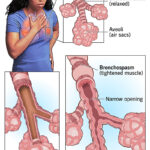Women at high risk for breast cancer due to genetic, familial, or personal factors require specialized, proactive interventions to mitigate their elevated risk. Prevention efforts span pharmacological, surgical, and lifestyle domains, supported by rigorous surveillance and personalized risk assessment.

Identifying High-Risk Women for Breast Cancer
Understanding individual risk profiles is essential to implementing effective preventive strategies.
Risk Factors Indicating High-Risk Status
- Genetic mutations: BRCA1, BRCA2, TP53, PALB2
- Family history: Multiple first-degree relatives with breast or ovarian cancer
- Personal history: Atypical hyperplasia, lobular carcinoma in situ (LCIS)
- Radiation exposure: Chest radiation before age 30
- Reproductive history: Early menarche, late menopause, nulliparity
Risk Assessment Tools
- Gail Model: Estimates 5-year and lifetime breast cancer risk
- Tyrer-Cuzick Model: Incorporates genetic and familial data
- BOADICEA and BRCAPro: Used in genetic counseling settings
High risk is typically defined as a lifetime breast cancer risk ≥20–25%.
Genetic Testing and Counseling: The Foundation of Prevention
Genetic counseling plays a vital role in evaluating inherited cancer syndromes and informing personalized prevention.
BRCA1/2 and Other Pathogenic Variants
- Women with BRCA1 or BRCA2 mutations face up to 72% lifetime breast cancer risk
- PALB2, CHEK2, ATM, TP53 mutations confer moderate to high risk
Counseling Process
- Review of personal and family cancer history
- Discussion of implications for screening, prophylaxis, and family members
- Informed consent for testing and post-test planning
Pharmacologic Prevention: Chemoprevention with Risk-Reducing Medications
Selective estrogen receptor modulators (SERMs) and aromatase inhibitors (AIs) are established agents for breast cancer chemoprevention in high-risk populations.
Tamoxifen
- Indication: Pre- and postmenopausal women
- Dosage: 20 mg/day for 5 years
- Risk reduction: Up to 50% in estrogen receptor-positive (ER+) breast cancers
- Side effects: Hot flashes, increased risk of thromboembolism and endometrial cancer
Raloxifene
- Indication: Postmenopausal women only
- Comparable efficacy: Slightly lower than tamoxifen, fewer uterine side effects
- Dual benefit: Osteoporosis prevention
Aromatase Inhibitors
- Agents: Anastrozole, Exemestane
- Indication: Postmenopausal high-risk women
- Risk reduction: Up to 65% for ER+ breast cancers
- Side effects: Bone loss, arthralgia, cardiovascular risk
Surgical Risk Reduction: Prophylactic Options for Genetic Carriers
Surgical interventions offer the highest level of breast cancer risk reduction in high-risk women, particularly those with BRCA mutations.
Bilateral Prophylactic Mastectomy (BPM)
- Risk reduction: Up to 95% in BRCA carriers
- Timing: Often performed after childbearing or based on personal preference
- Reconstruction: Immediate or delayed options available
Bilateral Salpingo-Oophorectomy (BSO)
- Additional benefit: Reduces ovarian cancer risk in BRCA mutation carriers
- Indirect breast cancer risk reduction: Decreases estrogen exposure, particularly in BRCA2 carriers
Multidisciplinary consultation is essential before surgical decisions.
Enhanced Surveillance for Early Detection
While not preventive, intensive screening facilitates early detection, significantly improving prognosis in high-risk women.
Imaging Guidelines
| Risk Level | Recommended Screening |
|---|---|
| BRCA mutation carriers | Annual breast MRI + annual mammogram, starting at age 25–30 |
| Lifetime risk ≥20% | Annual MRI and mammogram alternating every 6 months |
| LCIS or atypical hyperplasia | Annual mammogram; consider MRI based on density and risk |
Clinical Exams
- Every 6–12 months starting at age 25–30
- Reinforce breast self-awareness and symptom reporting
Lifestyle Modifications: Behavioral Strategies for Risk Reduction
Modifiable lifestyle factors can influence breast cancer risk, particularly in high-risk groups.
Diet and Physical Activity
- High-fiber, plant-rich diets may lower risk
- Regular exercise (150–300 minutes/week) reduces estrogen levels and inflammation
Weight Management
- Obesity, particularly postmenopausal, increases risk
- Waist circumference is a stronger predictor than BMI
Alcohol Intake
- Alcohol consumption is associated with dose-dependent breast cancer risk
- High-risk women should limit intake or abstain
Hormone Replacement Therapy (HRT)
- Avoid combined estrogen-progestin HRT in high-risk women
- If needed, use lowest dose for shortest duration
Integrative and Emerging Strategies
Research into additional preventive strategies for high-risk women is ongoing.
Vaccines and Immunoprevention
- Trials underway for HER2 and hormone receptor-targeted vaccines
- Aims to prime immune response against early cancer cells
Molecular Profiling
- Tumor gene expression signatures help refine risk and guide decisions
- Polygenic risk scores (PRS) increasingly used to stratify risk beyond BRCA mutations
Preventing breast cancer in high-risk women demands a tailored, multidisciplinary approach that integrates genetic insights, risk-reducing medications, surgical options, enhanced surveillance, and lifestyle changes. Early identification and engagement in preventive strategies can profoundly reduce incidence and improve quality of life for women most vulnerable to the disease.

